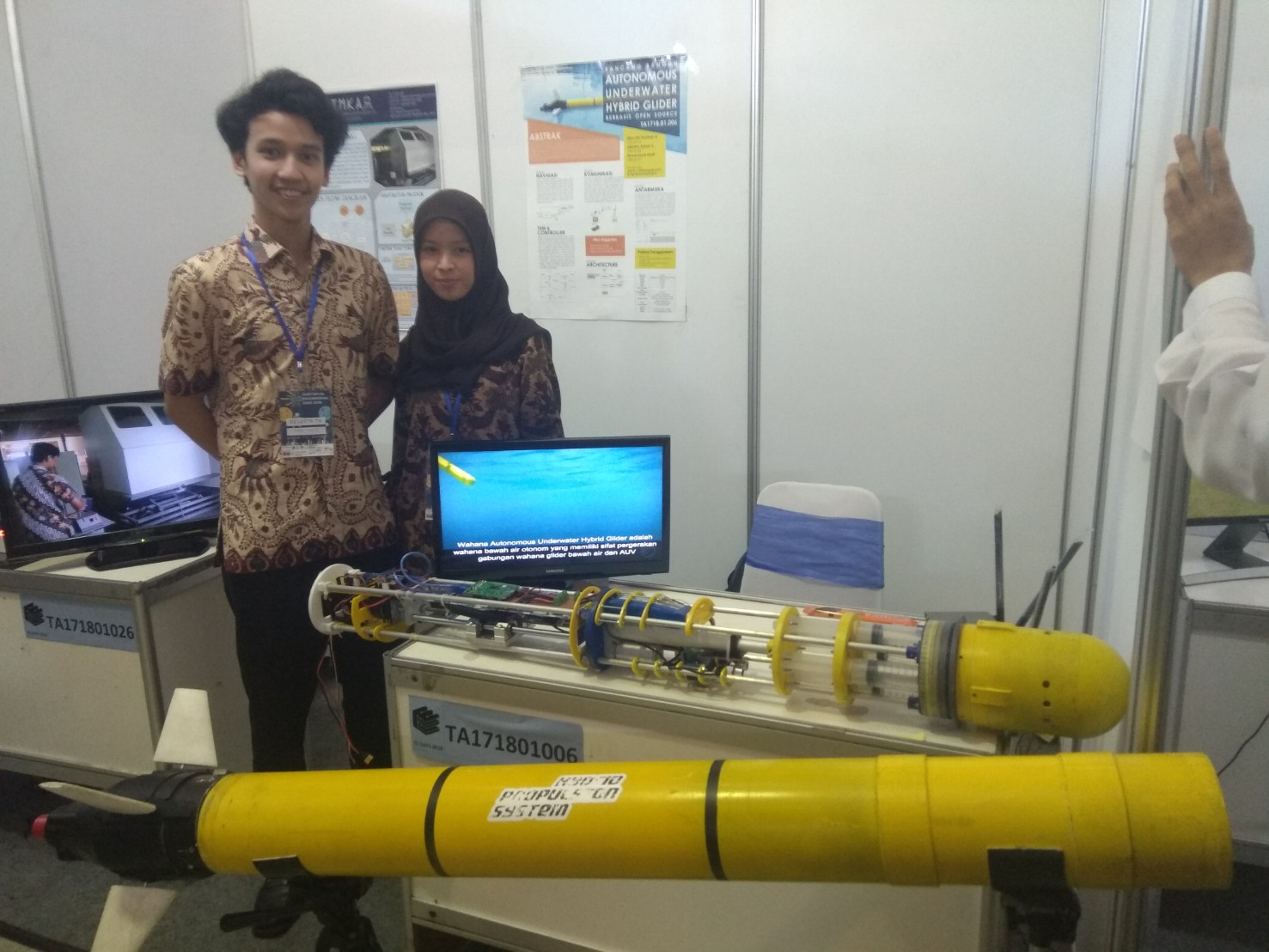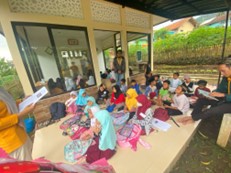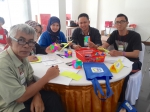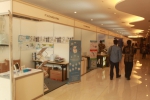ARNADYAKSA, Mini ‘Submarine’ by ITB Students

BANDUNG, itb.ac.id – Indonesia possesses massive potential of marine resources. Make up for 70% of Indonesian archipelago, water becomes vital food provider for Indonesian. Water also provide defense and security for all people of Indonesia and thus should be maintained. Hence, as a maritime country, Indonesia has to explore and map its water.
 Three Electrical Engineering ITB class of 2014 come up with an idea to explore Indonesian water. They are Silmi Ath Thahirah A (13214113), Albertus Adrian S (13214125), and Muhammad Hanif (13214147) who developed ARNADYAKSA (Autonomous Underwater Hybrid Glider).
Three Electrical Engineering ITB class of 2014 come up with an idea to explore Indonesian water. They are Silmi Ath Thahirah A (13214113), Albertus Adrian S (13214125), and Muhammad Hanif (13214147) who developed ARNADYAKSA (Autonomous Underwater Hybrid Glider).
“ARNADYAKSA, this underwater vehicle, can explore Indonesian water with high maneuver and long lasting,” said Adrian. This combination of Autonomous Underwater Glider (AUG) and Autonomous Underwater Vehicle (AUV) is one of many final projects displayed in EEDays 2018.
The glider is a mini unmanned “submarine” that can move without conventional motor. “It uses Archimedes’ law of buoyancy to support its mobility,” Adrian said on Tuesday (22/5/2018) at Aula Timur.
ARNADYAKSA is equipped with a suction tool that resembles piston to draw and discharge water so that it can move to and fro vertically and zigzag underwater. This device is also equipped with inertia sensor that keep its balance underwater to prevent tilting when finding position coordinate. ARNADYAKSA has been tested in less than 10 meter underwater.
“This innovation costs around 12-13 million on the current prototype phase. We believe that on bigger phase the cost could be reduced, especially if mass produced,” Adrian said.
The idea come with the intention to help the government to explore Indonesian marine with lower cost but give wider and better data coverage. “Glider could respond to expensive fuel for exploration submarine, and it is energy efficient because it uses physics phenomenon to move,” he said and adding that this device is still in final project scale. Data collection can also be controlled from the center (land) to the glider underwater.
Several countries use glider as data collection tool for seismic, bathymeter, or marine biota research. “This could be a solution to maritime exploration in Indonesia,” Adrian said. However, he admitted that development of this device should be conducted continuously to minimalize mistake and optimize production cost of the glider. “We hope the government is interested and use our idea,” he concluded.
Reporter: Ferio Brahmana (TPB FTI 2017)

scan for download








